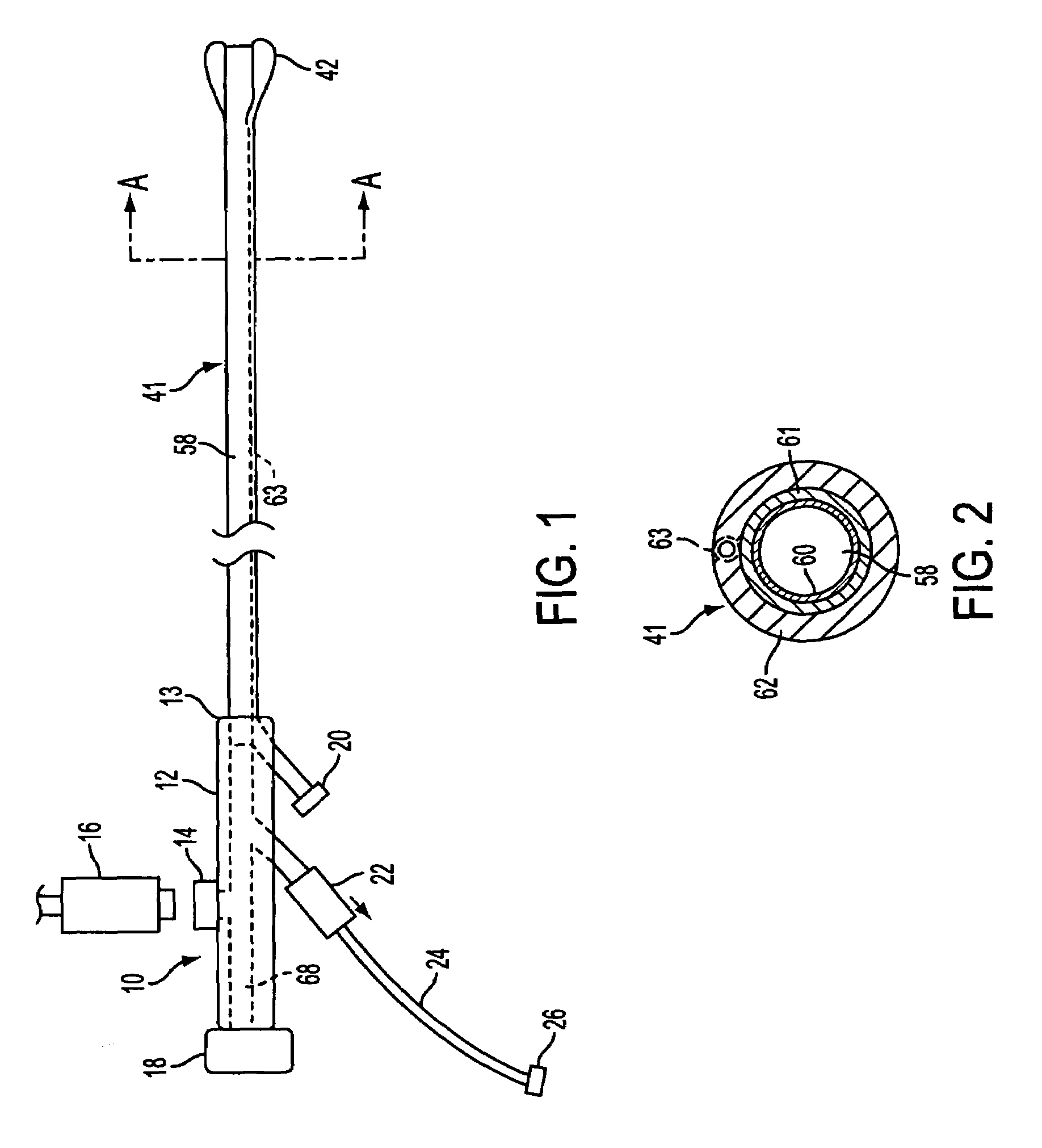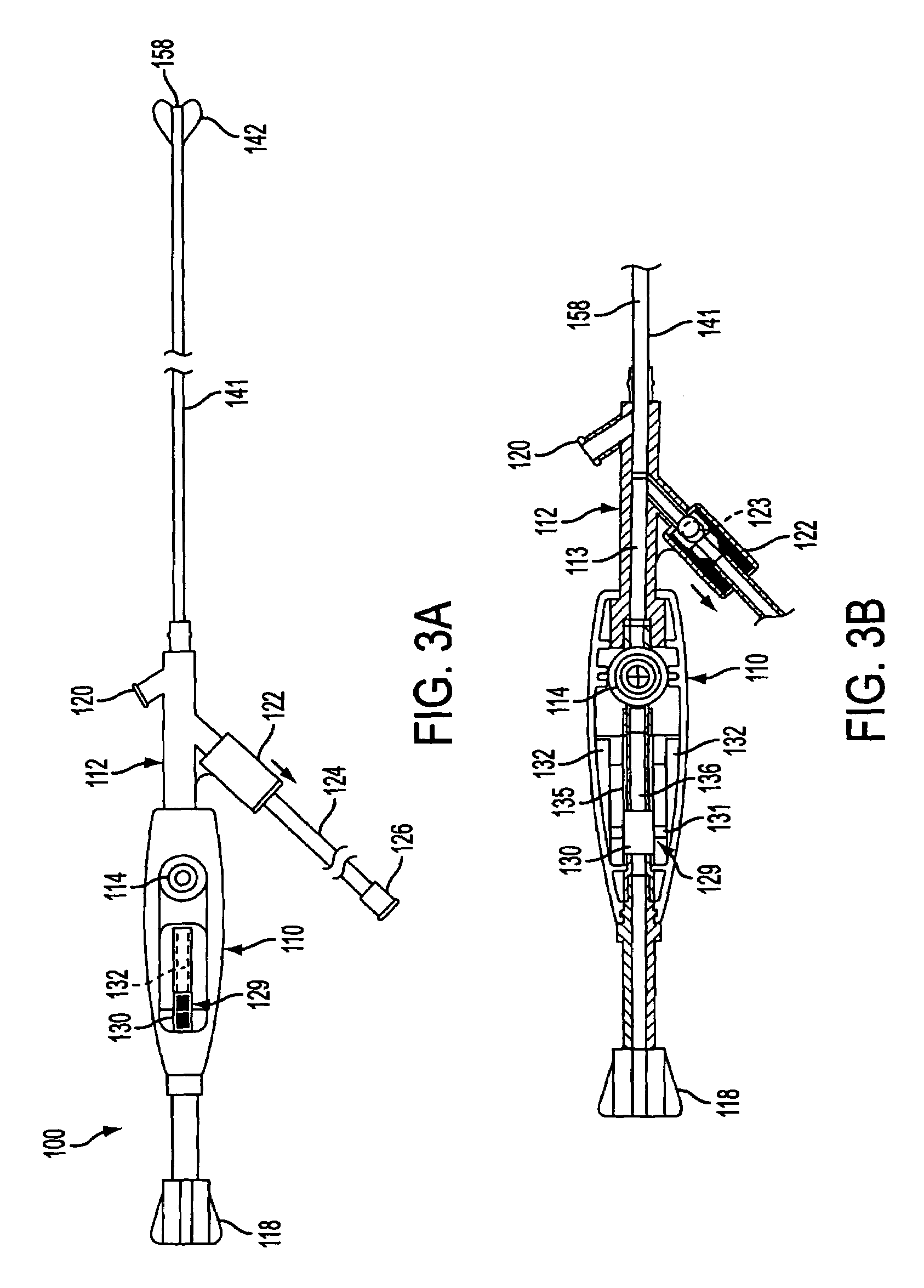Proximal catheter assembly having a self-limiting aspiration valve
- Summary
- Abstract
- Description
- Claims
- Application Information
AI Technical Summary
Benefits of technology
Problems solved by technology
Method used
Image
Examples
Embodiment Construction
[0036]The present invention is directed to a proximal catheter assembly that is configured to enable natural aspiration through a catheter lumen and, optionally, suction-assisted aspiration or infusion through the catheter lumen. The proximal catheter assembly of the present invention enables a substantially continuous rate of natural, physiologically-regulated aspiration through the lumen of the catheter by enabling fluid communication between the lumen of the catheter and a patient's venous vasculature. The proximal catheter assembly also provides an external suction / infusion port that may be used in conjunction with a syringe, so that a physician further may influence the rate of aspiration through the lumen of the catheter. The provision of substantially continuous retrograde flow and, optionally, selectively increased rates of retrograde flow at a treatment site facilitates removal of emboli during an interventional procedure while minimizing trauma to the treatment vessel. The...
PUM
 Login to View More
Login to View More Abstract
Description
Claims
Application Information
 Login to View More
Login to View More - R&D
- Intellectual Property
- Life Sciences
- Materials
- Tech Scout
- Unparalleled Data Quality
- Higher Quality Content
- 60% Fewer Hallucinations
Browse by: Latest US Patents, China's latest patents, Technical Efficacy Thesaurus, Application Domain, Technology Topic, Popular Technical Reports.
© 2025 PatSnap. All rights reserved.Legal|Privacy policy|Modern Slavery Act Transparency Statement|Sitemap|About US| Contact US: help@patsnap.com



